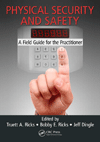Regulating patrols and processes without micromanaging your security team

If anyone thinks robots will be replacing human security guards in the near future, these numbers may quickly change their minds. Private security officers now outnumber public police officers in more than 40 countries, reports The Guardian. In the United States, there are roughly 800,000 police officers, but well over 1 million private security officers. Employment is projected to grow about 3% from now until 2029, which is comparable to several other occupations.
Private guards patrol shopping malls, gated communities, condo buildings, schools, hospitals, casinos, and so much more. Different clients will have different needs and expectations, but no matter who you’re working for, your team will be expected to keep property and people safe.
Security managers have the difficult challenge of making sure each of their employees is doing their job properly, even though they are in different locations and must perform different duties. Each guard probably has a different way of completing tasks and conducting guard tours, too. With so many variables, so many moving parts, and so many employees, managers need to think beyond paper forms and reports if they want to remain competitive in this industry. Manual processes are inefficient, time-consuming, and lend themselves to mistakes. Furthermore, when relying on paper reports, managers can only spot issues after the fact, which puts them in a reactive position as opposed to a proactive one.
No, robots aren’t going to replace security guards, but an integrated security approach that includes simple, reliable tech tools is going to be crucial to minimizing human error and streamlining security patrols and processes.
Security technology promotes routines and best practices
The security industry is embracing a new wave of security technology that can help with patrols, scheduling, reporting, and much more. This tech isn’t stereotypically futuristic; it’s largely phone apps and security management software. Apps are simple (we’ve all used them) and they don’t get in anyone’s way. This means there’s no steep learning curve for security staff, and no unreasonable cost barrier for security companies.
Security apps prompt guards to follow standard processes. Take patrols, for example. Instead of performing irregular patrols, or skipping them altogether, managers can use a guard tour system to preschedule patrols for all of their guards, including routes, checkpoints, and start times. To perform and complete the patrols, guards only need to have their smartphones and the patrol app. If a guard fails to perform a patrol, or misses a checkpoint, the manager or supervisor is notified right away.
There are even systems that will keep track of your guards’ locations throughout their shifts. While this feature does offer some benefits, managers should seriously consider whether it will do more harm than good. Managers and supervisors don’t have time to micromanage, and staff don’t ever want to feel like they’re constantly being watched.
Most managers will appreciate that they can check in on patrol activity if they need to, but don’t have to constantly monitor their team.
Better structure
Mobile patrol systems also allow guards to make more detailed reports about issues, and manage incidents in less time. The mandatory incident report fields ensure all critical information is documented, and with the option to add photos and videos, guards can share more without having to write more.
Security managers who oversee multiple sites will appreciate the uniformity and consistency that these platforms provide. No matter who the client is, the information and logs submitted by your team will meet the same quality standards.
More transparency for clients and managers
Security tech’s benefits also extend to issues regarding transparency. Mobile security platforms prompt and store concise daily reports that offer key insights about recurring issues and the effectiveness of security strategies. Some programs may even have a customizable reporting feature. Reporting is vital to quality assurance. However, it also provides the documentation companies need to properly evaluate their own performance. Clients like to see numbers because they provide factual evidence about the effectiveness of the service being offered. Security technology allows managers to create and share clear reports in minutes. Using this feedback, companies can make informed decisions and make adjustments based on real data.
Conclusion
Security management apps and programs are helping to remove, or at least minimize, some of the most tedious and inefficient processes for security guards, supervisors and managers. Even though many are designed to be affordable for small and large companies, one of the main reasons security businesses choose not to invest in tech solutions is the cost. However, the time saved, efficiencies gained, and improvements to patrols and other processes are far more valuable than whatever is saved by not purchasing one of these products.
Looking for a reprint of this article?
From high-res PDFs to custom plaques, order your copy today!









